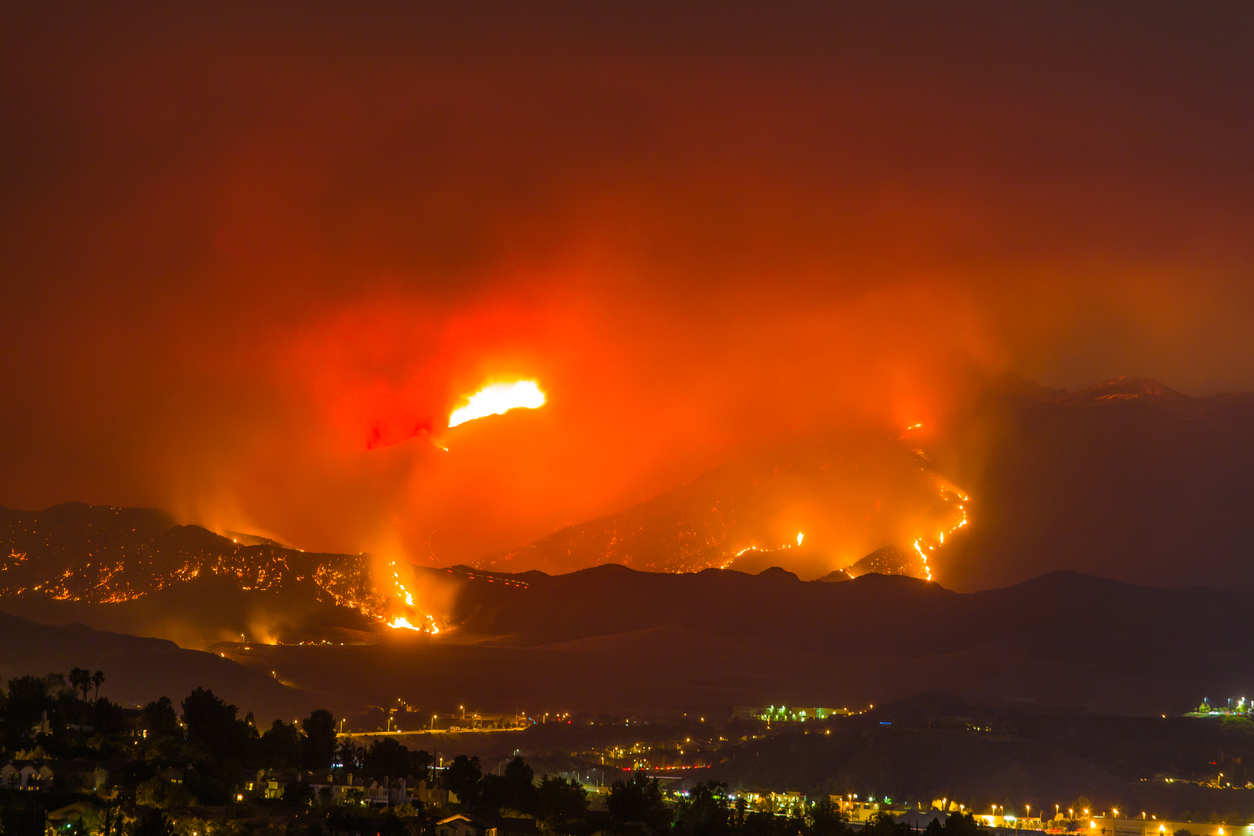Every state except Delaware experienced wildfires last year, and experts predict an above-average season this year as well, according to Richard Standring, a senior risk consultant at insurer Allianz SE.
Experts advise businesses across the country, including those in areas that are not traditionally considered wildfire hotspots, to take precautions.
"It's about being proactive rather than reactive," Mr. Standring explained. "No state is immune to wildfire." "The map is being redrawn."
Companies across industries must consider their specific risk factors, from a fast-food restaurant in a drought-stricken California strip mall to a nursing home that may need to plan for an emergency evacuation.
Summer is typically peak wildfire season. However, as with hurricane season, which has become longer in recent years, the season of intense wildfires has now taken up a larger portion of the calendar.
A December fire that swept through Denver and Boulder, Colo., suburbs demonstrated that wildfires have become so unpredictable that they can strike at any time.
Though wildfires are a national concern, California, the usual hotspot for wildfires in the United States, remains the most vulnerable. According to Verisk Analytics Inc., the state has more than two million properties at high to extreme risk of wildfire, far more than second-place Texas, which has about 718,000 properties at risk.
According to a 2021 report from insurer CNA Financial Corp., fire consumed at least 10 million acres in the United States in three of the five years ending in 2020. In comparison, Maryland has approximately eight million acres.
According to the National Oceanic and Atmospheric Administration, wildfires burned about 7.1 million acres last year, which was slightly above average.
According to financial services firm Aon PLC, the costliest U.S. wildfire to date, the 2018 Camp Fire in California, caused an estimated $10.4 billion in insured losses.
According to Robin Cohen, chair of insurance-focused law firm Cohen Ziffer Frenchman & McKenna LLP, the worsening wildfire prospects for California have made it more difficult for businesses, particularly smaller ones, to find insurance at a reasonable price.
"The premium payments have gotten astronomical," she said, adding that she had seen 300 percent to 400 percent increases from the previous year.
Because of the difficulty in finding a single insurer willing to take on large amounts of risk, some of Ms. Cohen's larger clients with extensive property portfolios in California have begun to buy insurance from multiple carriers, she said.
Others, according to Ms. Cohen, have begun to self-insure, or go without insurance and instead set aside funds to cover potential losses.
Though large fires are often thought to destroy everything in their path, wildfires are what industry experts call a "high-resolution peril"—an event with very localized effects. A fire may reduce buildings on one side of a street to blackened cinders while obliterating those on the other.
According to Kelly Hereid, a climate scientist who heads the catastrophe research and development unit at Liberty Mutual Insurance Co., the type of construction materials used, for example, can mean the difference between ruin and survival for a property.
Dr. Hereid explained that in the December Marshall fire in Colorado, advances in building codes saved some newer buildings while destroying those built in the 1960s and 1970s.
"They were so close, they had melted pieces of their neighbor's home stuck to the siding," she explained. "However, because they were built to that more resilient building code, none of those homes were lost."
Insurers, who have a vested interest in not seeing their policyholders' property destroyed, have led much of the effort to mitigate the damage caused by weather events such as wildfires. They have increasingly pushed for businesses to spend far more time planning how to respond to a wildfire.
Clearing vegetation and other combustible material from around a structure, for example, can help fortify it against fire. Mr. Standring believes that a small step, such as a fast-food restaurant not having vegetation near a drive-through lane where people might discard cigarettes, could prevent a fire.
According to Steve Hernandez, a risk control expert at CNA, businesses are increasingly planning ahead for how their operations might respond to a wildfire, for example, with tabletop exercises to run through scenarios. According to Mr. Hernandez, businesses have become more aware of the risks, and C-suite executives and board members have begun to take an interest in modeling scenarios of what could go wrong.
As climate change worsens, having a prepared mindset has become more important.
"There is increasing awareness," Mr. Hernandez said. "We have moved from a wildfire season to a wildfire year."













